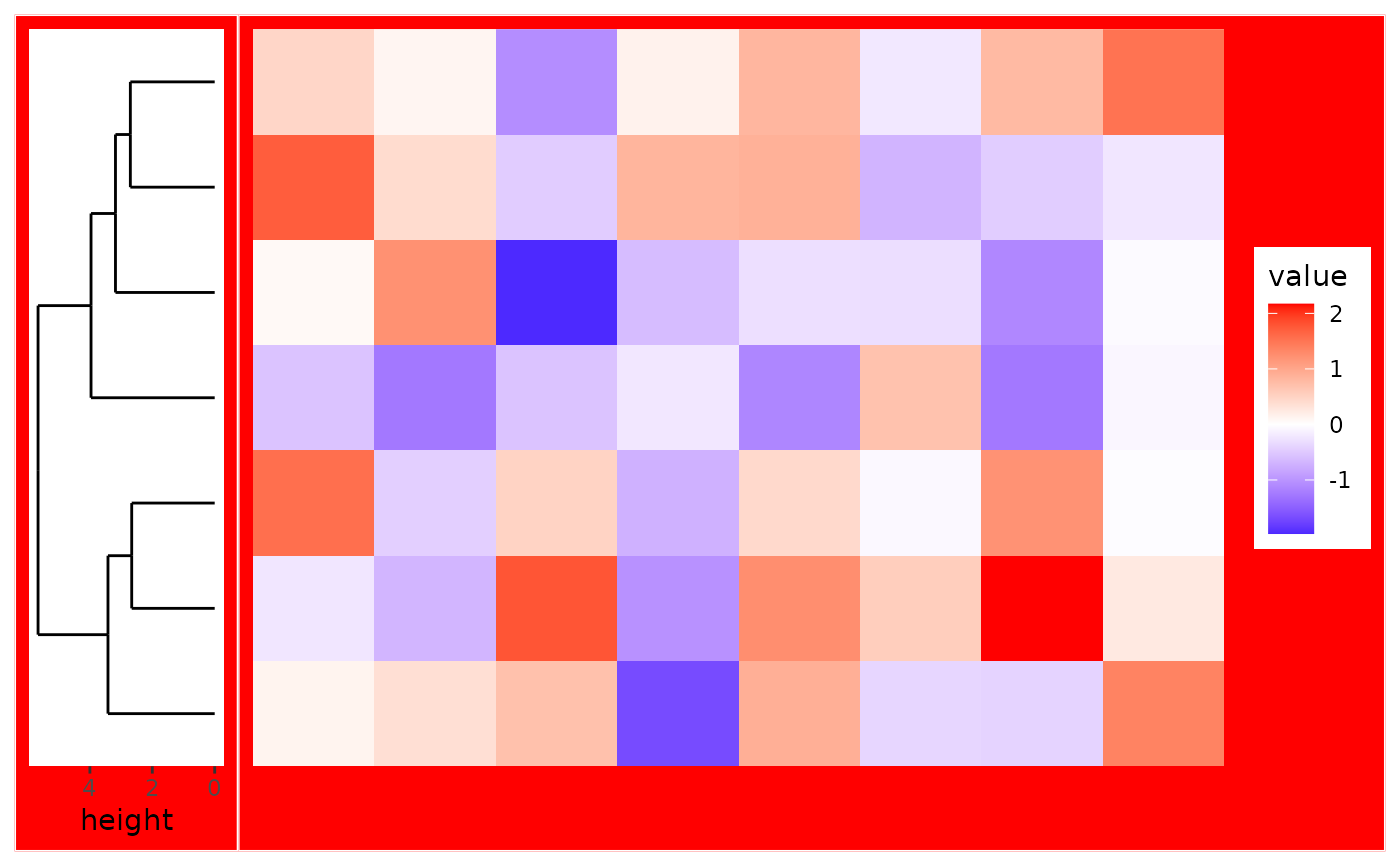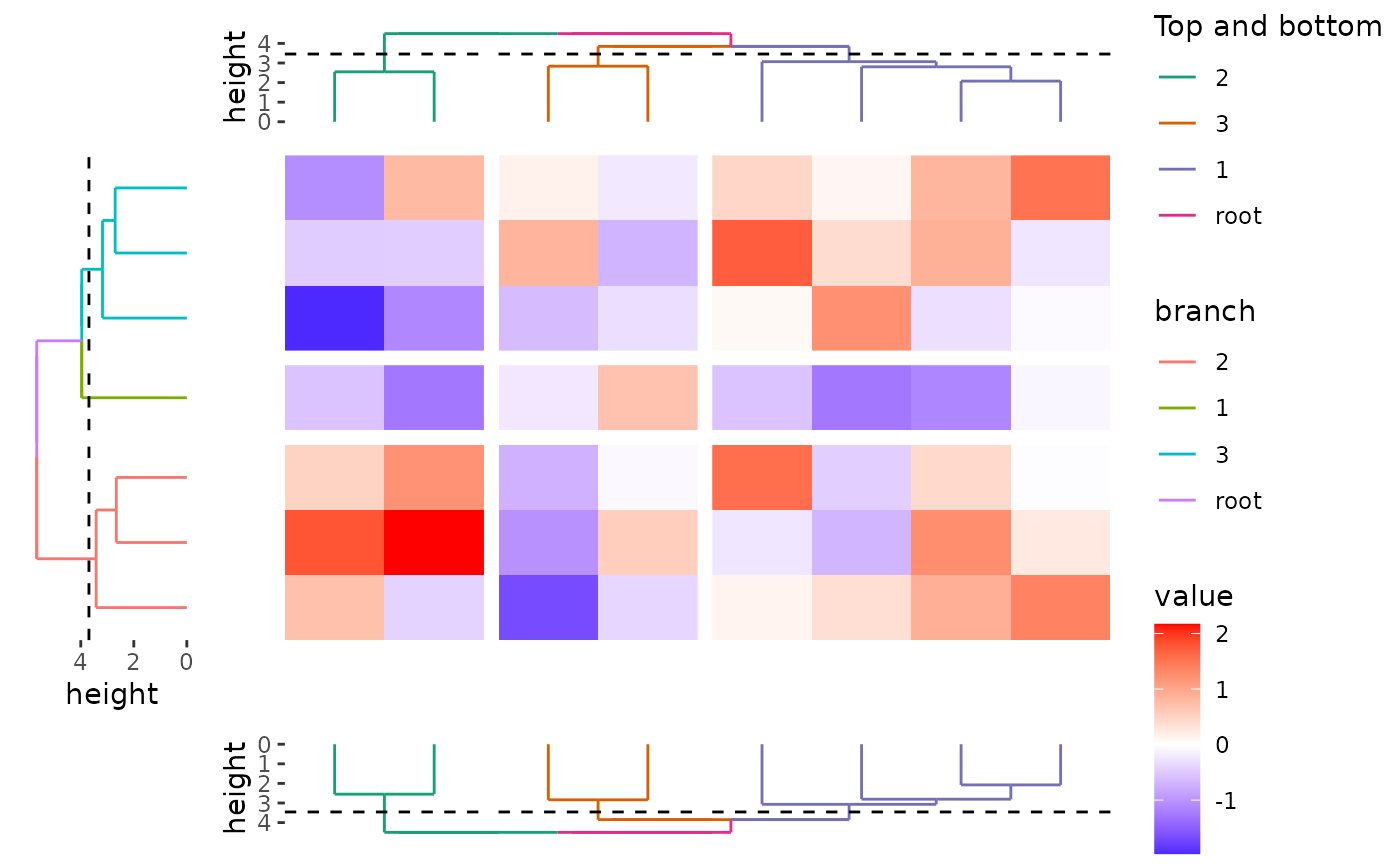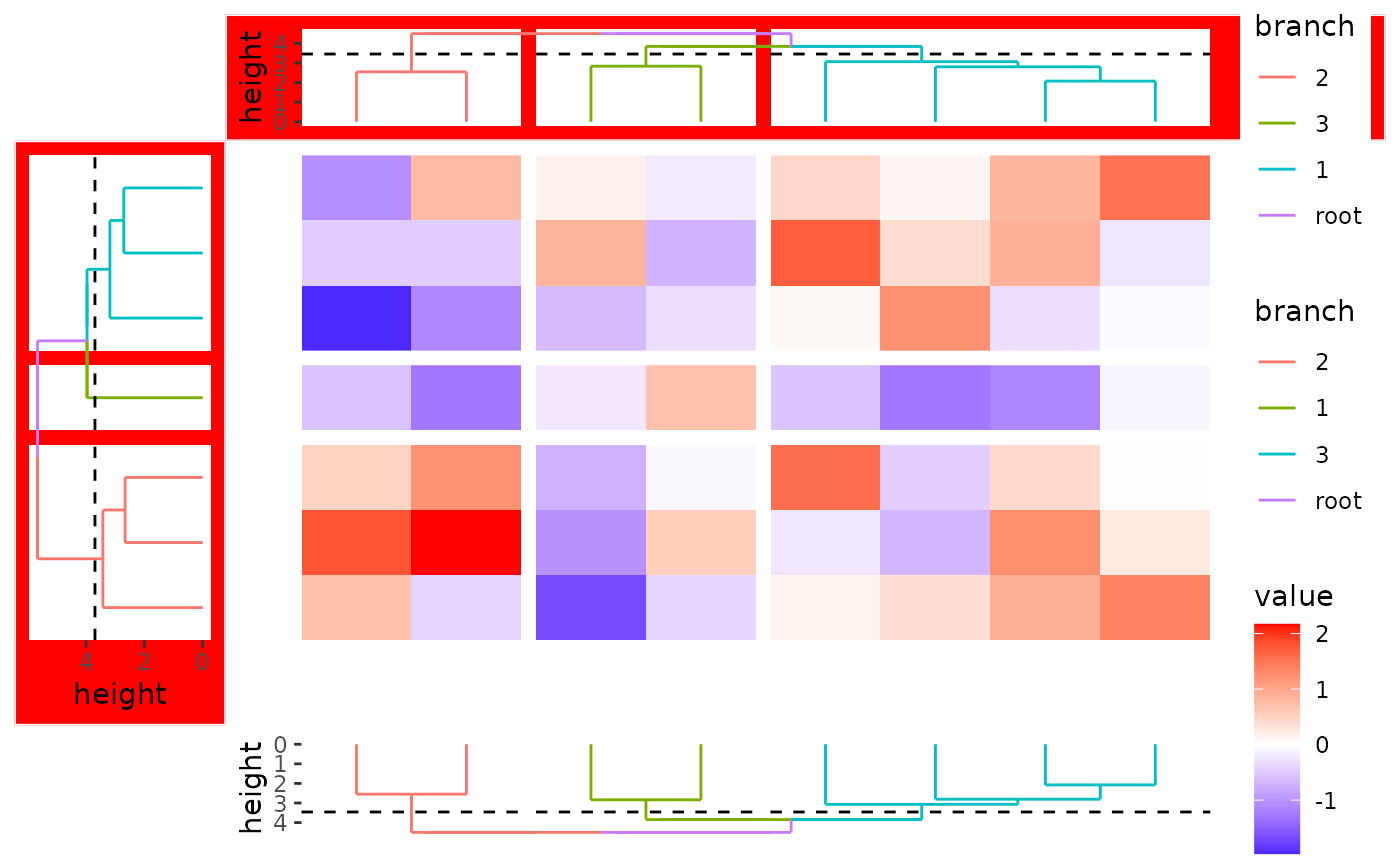The with_quad() function modifies the application context of elements in
ggheatmap()/quad_layout(). It controls how objects like themes, scales,
or other plot modifications apply to specific annotation stacks or the main
plot without altering the currently active layout or plot.
Arguments
- x
An object which can be added to the ggplot, including schemes. See
scheme_align(),scheme_data(), andscheme_theme()- position
A string specifying one or more positions-
"t","l","b", and"r"- to indicate the annotation stack context forx. IfNULL, will change the operated context to thequad_layout()itself. For default behaivours, seedetailssection.- main
A single boolean value indicating whether
xshould apply to the main plot, used only whenpositionis notNULL. By default, ifpositioniswaiver()and the active context ofquad_layout()is an annotation stack or the active context ofstack_layout()is itself,mainwill be set toTRUE; otherwise, it defaults toFALSE.
Details
Default Behavior when adding object wrapped with with_quad():
For quad_layout() object:
When
ggheatmap()/quad_layout()has no active annotation stack, objects added via+or-operate normally withoutwith_quad().When the active annotation stack is set,
with_quad()ensures the applied object also modifies:The main plot (by default).
Opposite annotation stacks when using
-.
For stack_layout() object:
When the active layout is the
stack_layout()itself:-operator will apply changes to all plots along thestack_layout(), which means if the stack layout is inhorizontal,-operator will also add the element to theleftandrightannotation, if the stack layout is invertical,-operator will also add element to thetopandbottomannotation.+operator won't do anything special.
When the active layout is the nested
ggheatmap()/quad_layout(), the+/-operator applies the elements to this nested layout, following the same principles as forggheatmap()/quad_layout().
Examples
set.seed(123)
small_mat <- matrix(rnorm(56), nrow = 7)
# By wrapping object with `with_quad()`, the `+` operator will apply the
# object not only to the active plot in the annotation stack, but also to
# the main plot unless specified by `main` argument otherwise.
ggheatmap(small_mat) +
# initialize the left annotation
anno_left(size = 0.2) +
align_dendro() +
# apply the object not only to the active plot in the annotation stack,
# but also to the main plot
with_quad(theme(plot.background = element_rect(fill = "red")))
#> → heatmap built with `geom_tile()`
 # the `-` operator will apply changes not only to the active annotation
# stack but also to the opposite one (i.e., bottom if top is active, and
# vice versa). The same principle applies to the left and right annotation.
ggheatmap(small_mat) +
anno_left(size = 0.2) +
align_dendro(aes(color = branch), k = 3L) +
# Change the active layout to the left annotation
anno_top(size = 0.2) +
align_dendro(aes(color = branch), k = 3L) +
anno_bottom(size = 0.2) +
align_dendro(aes(color = branch), k = 3L) -
# Modify the color scale of all plots in the bottom and the opposite
# annotation, in this way, the `main` argument by default would be `TRUE`
with_quad(scale_color_brewer(palette = "Dark2", name = "Top and bottom"))
#> → heatmap built with `geom_tile()`
# the `-` operator will apply changes not only to the active annotation
# stack but also to the opposite one (i.e., bottom if top is active, and
# vice versa). The same principle applies to the left and right annotation.
ggheatmap(small_mat) +
anno_left(size = 0.2) +
align_dendro(aes(color = branch), k = 3L) +
# Change the active layout to the left annotation
anno_top(size = 0.2) +
align_dendro(aes(color = branch), k = 3L) +
anno_bottom(size = 0.2) +
align_dendro(aes(color = branch), k = 3L) -
# Modify the color scale of all plots in the bottom and the opposite
# annotation, in this way, the `main` argument by default would be `TRUE`
with_quad(scale_color_brewer(palette = "Dark2", name = "Top and bottom"))
#> → heatmap built with `geom_tile()`
 # When the `position` argument is manually set, the
# default value of the `main` argument will be `FALSE`.
ggheatmap(small_mat) +
anno_left(size = 0.2) +
align_dendro(aes(color = branch), k = 3L) +
anno_top(size = 0.2) +
align_dendro(aes(color = branch), k = 3L) +
anno_bottom(size = 0.2) +
align_dendro(aes(color = branch), k = 3L) -
# Modify the background of all plots in the left and top annotation
with_quad(theme(plot.background = element_rect(fill = "red")), "tl")
#> → heatmap built with `geom_tile()`
# When the `position` argument is manually set, the
# default value of the `main` argument will be `FALSE`.
ggheatmap(small_mat) +
anno_left(size = 0.2) +
align_dendro(aes(color = branch), k = 3L) +
anno_top(size = 0.2) +
align_dendro(aes(color = branch), k = 3L) +
anno_bottom(size = 0.2) +
align_dendro(aes(color = branch), k = 3L) -
# Modify the background of all plots in the left and top annotation
with_quad(theme(plot.background = element_rect(fill = "red")), "tl")
#> → heatmap built with `geom_tile()`

